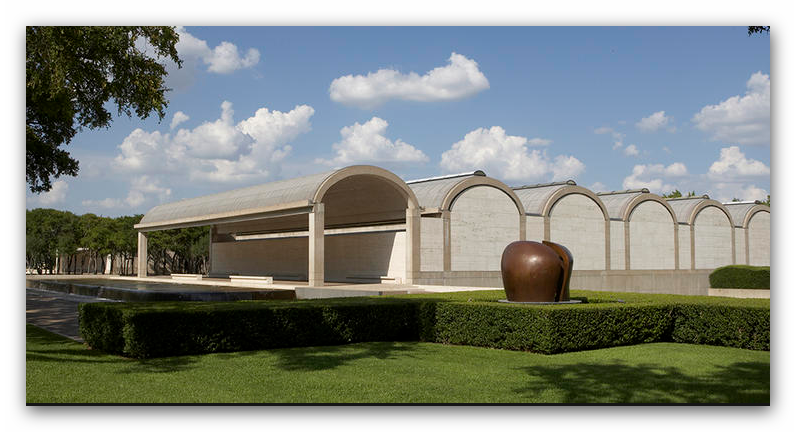Mar 26 2017 - Jun 25 2017
Fort Worth, TX
The American architect Louis Kahn (1901--1974) is regarded as one of the great master builders of the 20th century. With complex spatial compositions and a choreographic mastery of light, Kahn created buildings of archaic beauty and powerful universal symbolism. Among his most important works are the Salk Institute in La Jolla, California (1959--65), the National Assembly Building in Dhaka, Bangladesh (1962--83) and the Kimbell Art Museum in Fort Worth, Texas (1966--72). The exhibition Louis Kahn: The Power of Architecture, organized by the Vitra Design Museum (Weil am Rhein, Germany), is the first major retrospective of Kahn's work in two decades.
The exhibition encompasses an unprecedented and diverse range of architectural models, original drawings, photographs and films. All of Kahn's important projects are extensively documented----from his early urban planning concepts and single-family houses to monumental late works such as the Roosevelt Memorial in New York City (1973/74), posthumously completed in October 2012. The view of Kahn's architectural oeuvre is augmented by a selection of watercolors, pastels and charcoal drawings created during his travels, which document his skill as an artist and illustrator. Highlights of the exhibition include a 12-foot-high model of the spectacular City Tower designed for Philadelphia (1952--57), as well as previously unpublished film footage shot by Nathanial Kahn, the son of Louis Kahn and director of the film My Architect. Interviews with architects such as Frank Gehry, Renzo Piano, Peter Zumthor and Sou Fujimoto underscore the current significance of Kahn's work, which is being rediscovered and made accessible to a wide public audience with this exhibition.
Credit: Exhibition overview from museum website
Whether you go or not, Louis Kahn: The Power of Architecture, is the first comprehensive publication on this architect in 20 years, and presents all of his important projects. Essays by prominent Kahn experts discuss the sources, contexts and influences of his work; among the authors are such renowned art and architectural historians as Stanislaus von Moos, William J. R. Curtis, Eeva-Liisa Pelkonen and Neil Levine. Topics discussed include Kahn’s pioneering role in concrete construction; the visionary plans for his home city of Philadelphia; his years at Yale University; his dialogue with Josef Albers; and his importance for modern architecture in Southeast Asia. An illustrated biography provides new facts and insights about Kahn’s life and work.
In interviews, leading architects such as Frank Gehry, Renzo Piano, Peter Zumthor and Sou Fujimoto explain Kahn’s significance in today’s architectural discourse. An extensive catalogue of works features original drawings and architectural models from the Kahn archive, many of which are presented with high-quality images for the first time. The book is further augmented by a portfolio of Kahn’s travel drawings as well as photographs by Thomas Florschuetz, which offer completely new views of the Salk Institute and the Indian Institute of Management.
Exhibition Venues & Dates
Mar 26 2017 - Jun 25 2017
Fort Worth, TX

